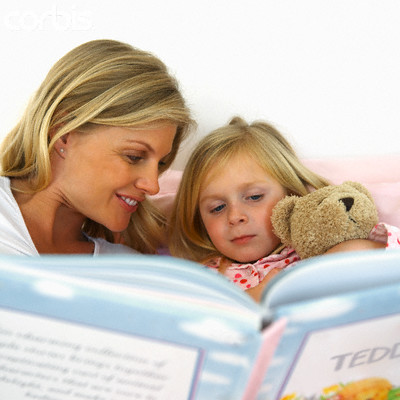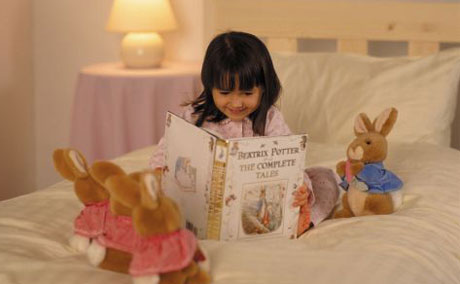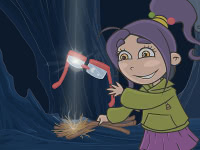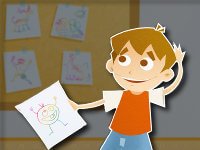The value of storytelling as part of education and family life
Tap the calamus image below to get free access to our best collection of stories for children with related activities. Download it to enjoy our stories whenever you want
Advertisement
![]() Where to start? Download our free Workbook of Values, watch our animated stories and enjoy Jakhu Stories, our stories for kids app
Where to start? Download our free Workbook of Values, watch our animated stories and enjoy Jakhu Stories, our stories for kids app
 There are numerous writings of very reputable people talking about the many benefits of storytelling, not only in children education, but in family life. What I am presenting here is a personal assessment of the points that I consider most important, with special emphasis on those that are not usually mentioned, but which may be helpful.
There are numerous writings of very reputable people talking about the many benefits of storytelling, not only in children education, but in family life. What I am presenting here is a personal assessment of the points that I consider most important, with special emphasis on those that are not usually mentioned, but which may be helpful.
The greatest benefit of education, no doubt, is the ability that has a story to convey values . Perhaps we have not consciously made good on it, but if you think, most values more firmly rooted in our own personality came to us from the hand of a story: in "The three little pigs", for instance, we instilled the importance of working well; "The tortoise and the hare" were showing us that constancy and modesty had borne fruit, and "The cicada and the ant" made us see that it was more profitable to be working than being a laggard.
This is not accidental. Every story, including tales, has a logical argument that unites the different parts, making them much easier to remember. In this way, our memory stores precisely because this plot is the glue of all these elements, and therefore the easiest way to access the remaining details of the story. And the moral is the best summary of a story, and so what better retains it. For example, one can forget what all details about the cicada and the ant, but do not forget that one was spending time while the other worked hard to store food.
Second, and closely related to the above, is the usefulness of stories to teach new things . Precisely because it is easier to recall the main story, and its importance as a link, the story allows easy access to other details. In fact, the stories have always been used to transmit ideas and knowledge, starting from Bible and Jesus of Nazareth, whose parables were a way to educate in a very practical style. I can still remember the case of a classmate at school who always got bad marks, which surprised everyone with an excellent note on a review of the history of the First World War precisely because he had been seeing a couple of films on the subject ...
 But in addition to being powerful tools of education and teaching, stories customized just before Sleeping allow to establish a strong link with the kids . To be creative and original every day, we must must devote all our ability and attention, if only during that time, and that is something that children, accustomed to be the focus of their parents' events, but no of their mind attention (too many parents have so many "brain noise" to park their concerns entirely, if only for a while) perceive with great gratitude and enthusiasm. And to customize a story (I always let them choose the main characters of the story), parents are forced to listen and take care for their children, so children feel really special. That emotional link is so strong that it is another important factor that facilitates memorization and assimilation as taught in these stories. I myself have discovered many times how my children were surprisingly recalling many low level details of stories I had told them long time ago, and never ever talking again about them.
But in addition to being powerful tools of education and teaching, stories customized just before Sleeping allow to establish a strong link with the kids . To be creative and original every day, we must must devote all our ability and attention, if only during that time, and that is something that children, accustomed to be the focus of their parents' events, but no of their mind attention (too many parents have so many "brain noise" to park their concerns entirely, if only for a while) perceive with great gratitude and enthusiasm. And to customize a story (I always let them choose the main characters of the story), parents are forced to listen and take care for their children, so children feel really special. That emotional link is so strong that it is another important factor that facilitates memorization and assimilation as taught in these stories. I myself have discovered many times how my children were surprisingly recalling many low level details of stories I had told them long time ago, and never ever talking again about them.
Finally, telling stories without books nor pictures, with the room in darkness and children lying on their beds, as I like to do, is a very effective way to help counteract the lack of attention that many children are suffering nowadays , caused by the fact of living in a world with so many visual stimuli. Using an out of the room light, and with the reassuring presence of their parents, children are prepared to open their ears to the world carried by the story, and without even realizing it, they are learning to focus their attention; but not only that, they do also use heard as a primary sense, quite the opposite of what will happen during daylight. I usually take advantage of this situation to further stimulate their visual sense, but in a creative way, as too many stimuli so perfectly constructed may do not help develop properly. So I flood stories and characters of bright colors, forcing them to imagine each part of the story.
I wouldn't want to end without stressing advantages of personalizing stories (for those who think this seems too difficult to do it every day, check for our article about how to create stories in the main menu). A cusotm story is an incredibly effective tool to "analyze" children's behaviors during the day . Taking advantage of the proximity in time and the freshness of their memories about what happened, through the story, we can praise what they have done well, or censor and try to change what they did not do so well. In this very emotional moment, children are so accessible, that a story that exemplifies clearly the attitude we like is much more effective than several hours of sermons and good words.

















